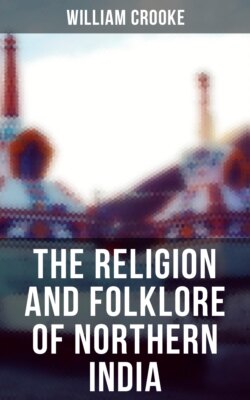Читать книгу The Religion and Folklore of Northern India - William Crooke - Страница 60
На сайте Литреса книга снята с продажи.
Pillar-worship of Bhîmsen.
ОглавлениеTable of Contents
The local worship of Bhîmsen beyond the Drâvidian tract is specially in the form of pillars, which are called Bhîmlâth or Bhîmgada, “Bhîm’s clubs.” Many of these are really the edict pillars which were erected by the pious Buddhist King Asoka, but they have been appropriated by Bhîmsen. Such are the pillars in the Bâlaghât District of the Central Provinces and at Kahâon in Gorakhpur. At Devadhâra, in the Lower Himâlaya, are two boulders, the uppermost of which is called Ransila, or “the stone of war.” On this rests a smaller boulder, said to be the same as that used by Bhîmsen to produce the fissures in the rocks; in proof of which the print of his five fingers is still pointed out, as they show the hand-mark of the Giant Bolster in Cornwall.18
Bhîmsen is one of the special gods of the Bhuiyas of Keunjhar, and they consider themselves to be descended from him, as he is the brother of Hanumân, the founder of their race. According to the Hindu ritual he has his special feast on the Bhaimy Ekâdashî, or eleventh of the bright fortnight in the month of Mâgh. The Bengal legend tells that Bhîmsen, the brother of Yudhisthira, when he was sent to the snowy mountains and lay benumbed with cold, was restored by the Saint Gorakhnâth, and made king of one hundred and ten thousand hills, stretching from the source of the Ganges to Bhutân. Among other miracles Bhîmsen and Gorakhnâth introduced the sacrifice of buffaloes in place of human beings, and in order to effect this Bhîmsen thrust some of the flesh down the throat of the holy man. So though they have both lost caste in consequence, they are both deified. The saint is still the tutelary deity of the reigning family of Nepâl, and all over that kingdom and Mithila Bhîmsen is a very common object of worship. That mysterious personage Gorakhnâth flits through religious legend and folk-lore from post-Vedic to mediæval times; and little has yet been done to discover the element of historical truth which underlies an immense mass of the wildest fiction.19
